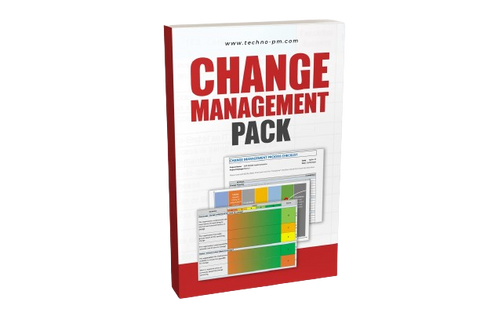Business Change Management: What Is It And Why It Matters?
Organizational Change
As the saying goes, the only constant is change. In fact, change is more relevant than ever since the world does not stop while we are planning the year ahead – being political changes, a pandemic that puts the economy on hold, or evolving technical developments and business model innovations – we are always subject to external forces at play.

Organizational Change
Change can also be derived from internal factors. That is the case for most change initiatives pursued by organizations as they implement projects and programs, the real vehicles for change. Regardless of the source of change, organizations tend to experience a common paradox: people want change, but they don’t want to change. Have you ever implemented a new software just to find out that people went back to hold habits? Or attempted to move desks in the office? Trust me, change management is tough. And that’s where the challenge and the power of effective change management lie: let me introduce you to Business Change Management.
What Is Organizational Change?
Business Change Management, also known as Organizational Change or simply Change Management (not to be confused with Change Requests and/or Configuration Management!), is the collection of processes, tools, and techniques that enables the management of change, especially from the people side, to drive the achievement of a desired new state in the organization. Due to the level and reach of the change introduced by projects and programs, a Business Change Manager often exists in such temporary structures; however, the change management capability can also be centralized in a specific department in the organization.
A Manager's Responsibilities in the Change Management Process
Effective change management starts even before a project is shaped and entails the following and not exhaustive list of responsibilities:
- Building a compelling case for change
- Assessing the readiness for change
- Assessing the impact of the change
- Preparing the Change Management Plan/Strategy
- Preparing the Communications Plan
- Assessing the engagement level
- Assessing and addressing barriers to change
- Preparing the Training Plan
- Delivering internal roadshows
- Identifying Change Champions
- Assessing the change effectiveness

To land the change, it is fundamental to lead the change; therefore, change management can be understood not just as a process but also as a capability to hold and develop. While change management can be difficult, we want to help you out. That is why we have done part of the work for you already by developing a toolkit that is ready to use. Yes, you read that right. Click on the image below to download this toolkit.

Change Management Process Templates
This comprehensive toolkit will provide you with templates and guidance on the following key artifacts: -
Change Management Plan:
This document is often used in the context of a certain project or program, and it works as the map that the project team or any other stakeholders can consult to know how change is going to be addressed in the project. It includes information about the role and responsibilities of the Business Change Manager, an analysis of the level of engagement of stakeholders, and a subsidiary plan for their communication requirements, amongst other relevant information.
Read in detail the Change Management Plan Template here.
Change Impact Assessment:
To successfully communicate and manage the change, it is crucial to assess what kind of change is coming. By completing an assessment of the change type, its reach and complexity, and the impact it will cause at the individual, departmental, and organizational level, this exercise will enable a better preparation to address any concerns raised by impacted stakeholders. At the same time, ensure a sound rationale for and appropriate tailoring of the change effort.
Read in detail change impact assessment to monitor change impact.
Change Competency ADKAR Assessment:
When assessing an organization's change capability, few models are as well-known as ADKAR, from PROSCI®. This tool will ensure that knowledge and tools are being given to individuals to successfully adopt change in their working ways.
Download here the ADKAR template to start a project and continuously present/evaluate change focusing on the end-users.
Change Management Process Checklist:
Who doesn’t love an old good checklist? A checklist on the change management process offers a great prompt to ensure that none of the key steps have been forgotten when introducing change in the organization.
Check out the comprehensive change management checklist.
Change Curve:
The change curve is probably the most popular model to identify where each individual is in the change process, understand why they are behaving in a certain way, and support their smooth transition through the several stages of reaction to change.
Download the change curve model to see how you are progressing.
Change Readiness Assessment:
This tool determines how prepared each of the groups is for their role as recipients or as active agents in the upcoming change. It allows for early identification of adjustments in attitudes, resources required, or additional support needed. This ensures that the organization is not just managing change but also managing for change.
Download change readiness assessment to start the project in its start-up stage as this will give you a view if you are ready to consider (more) change.
It’s time to change how we deal with change. Why not start now?




